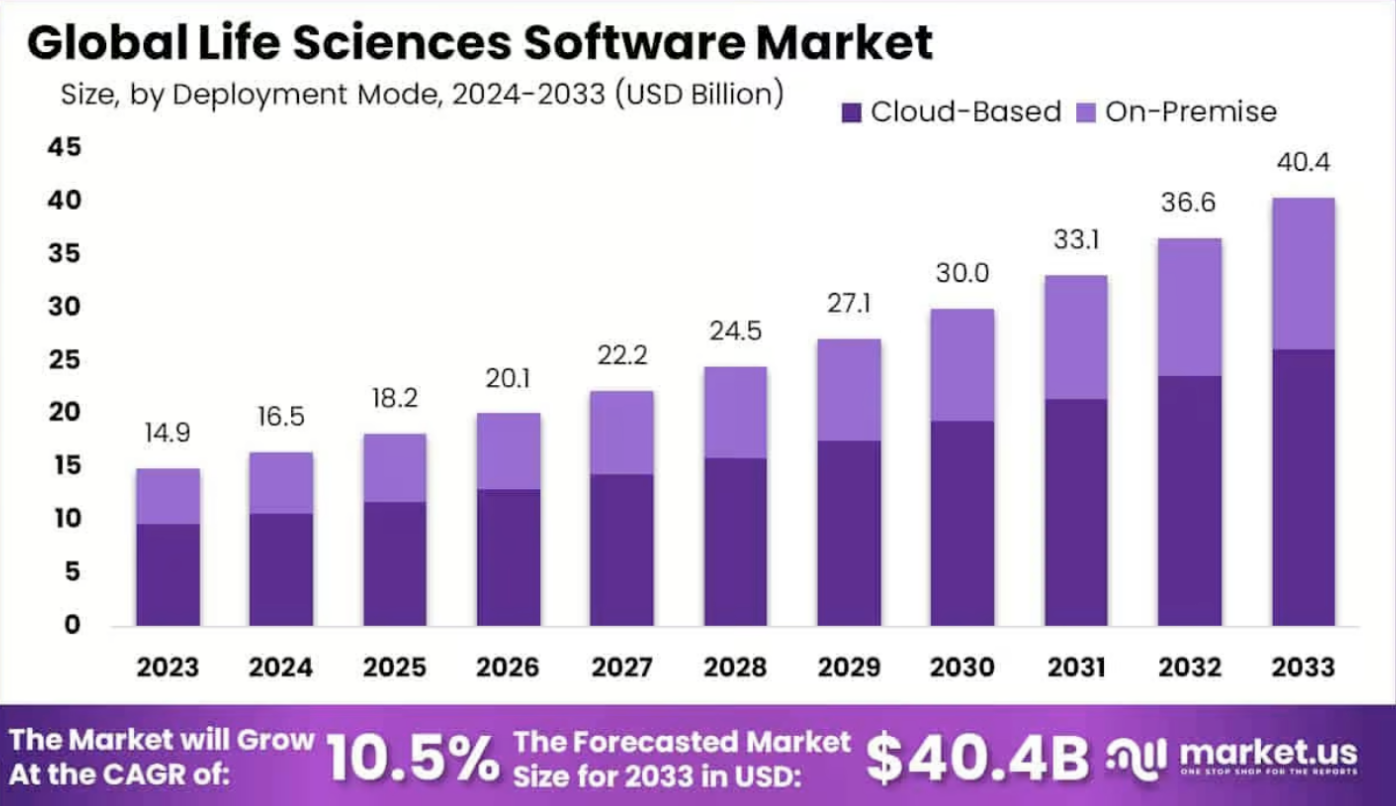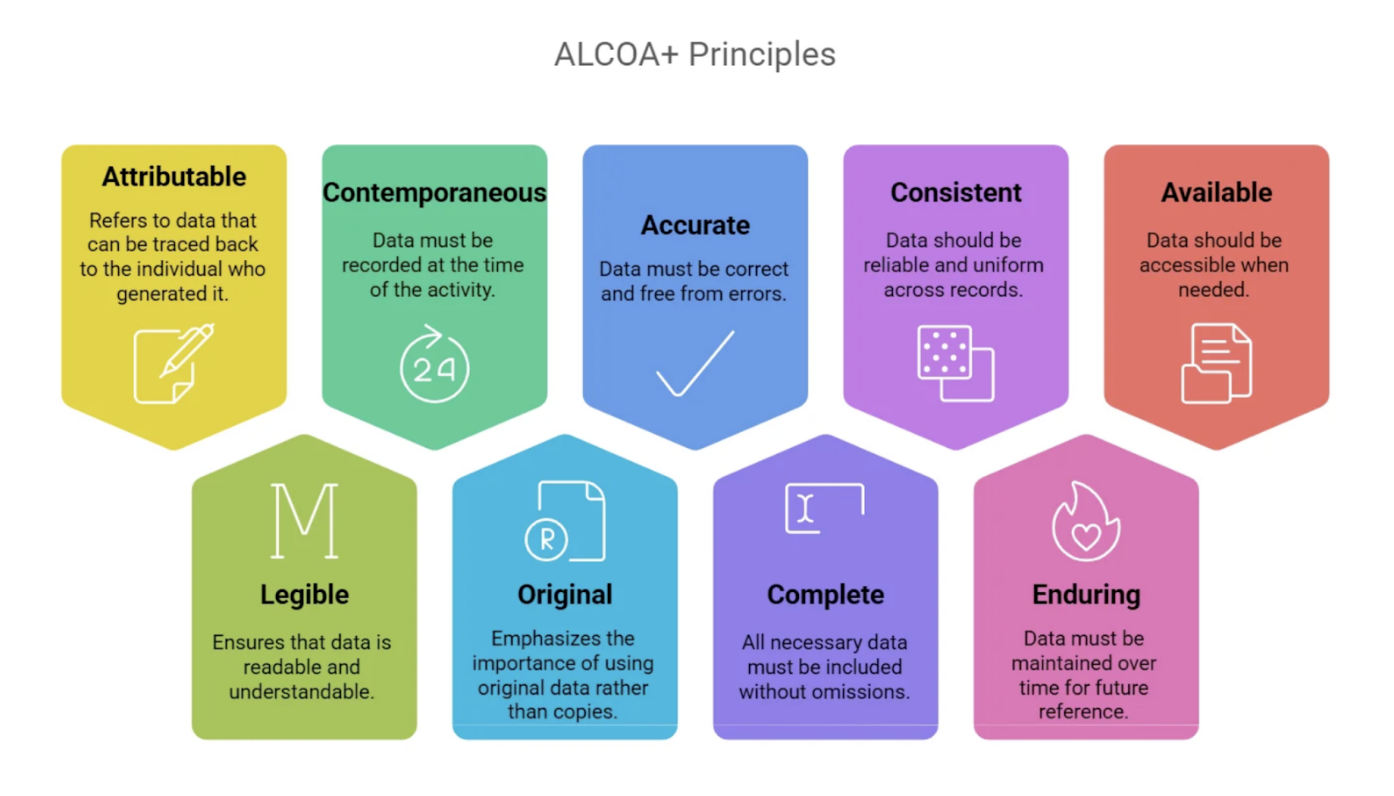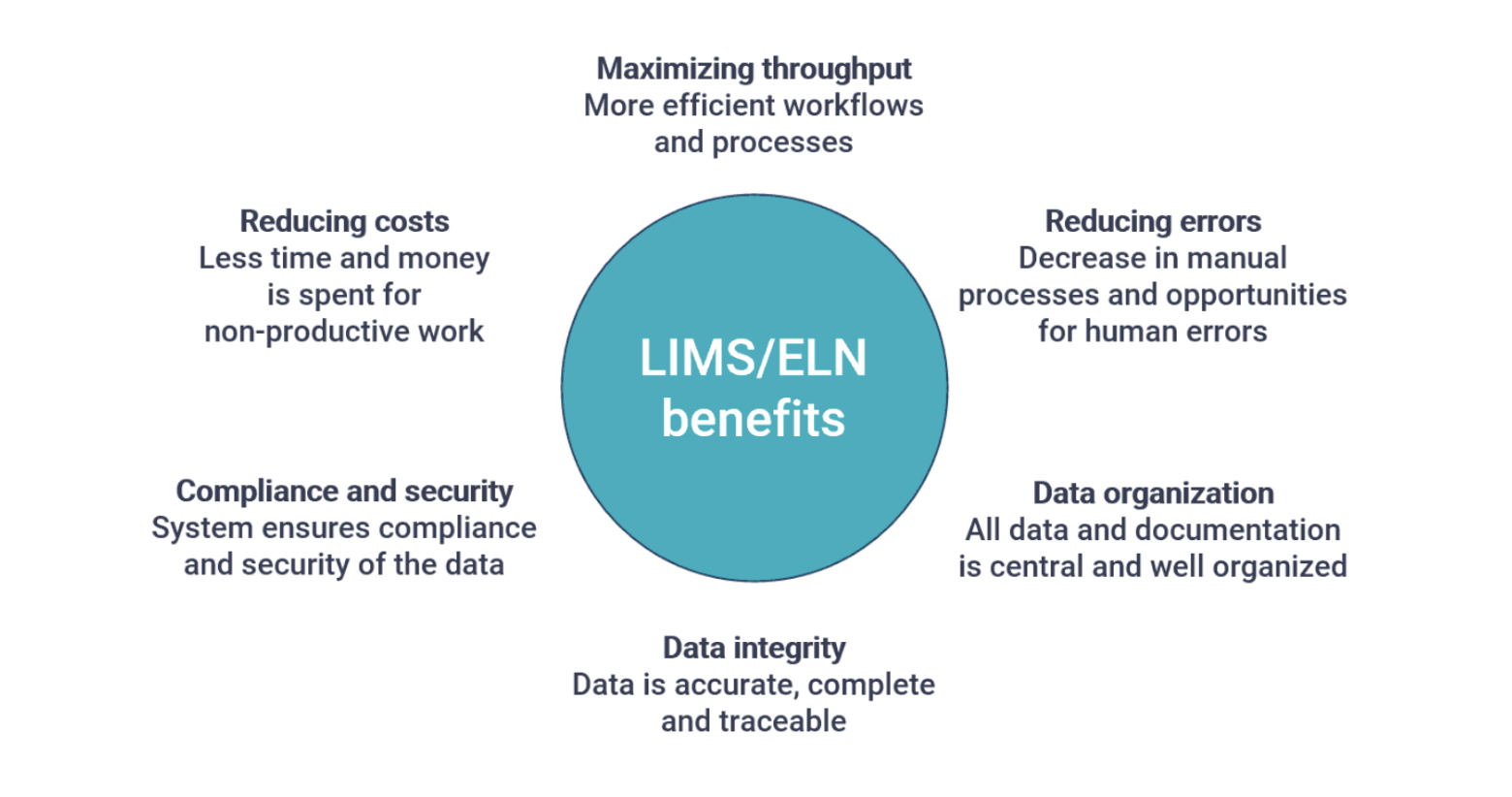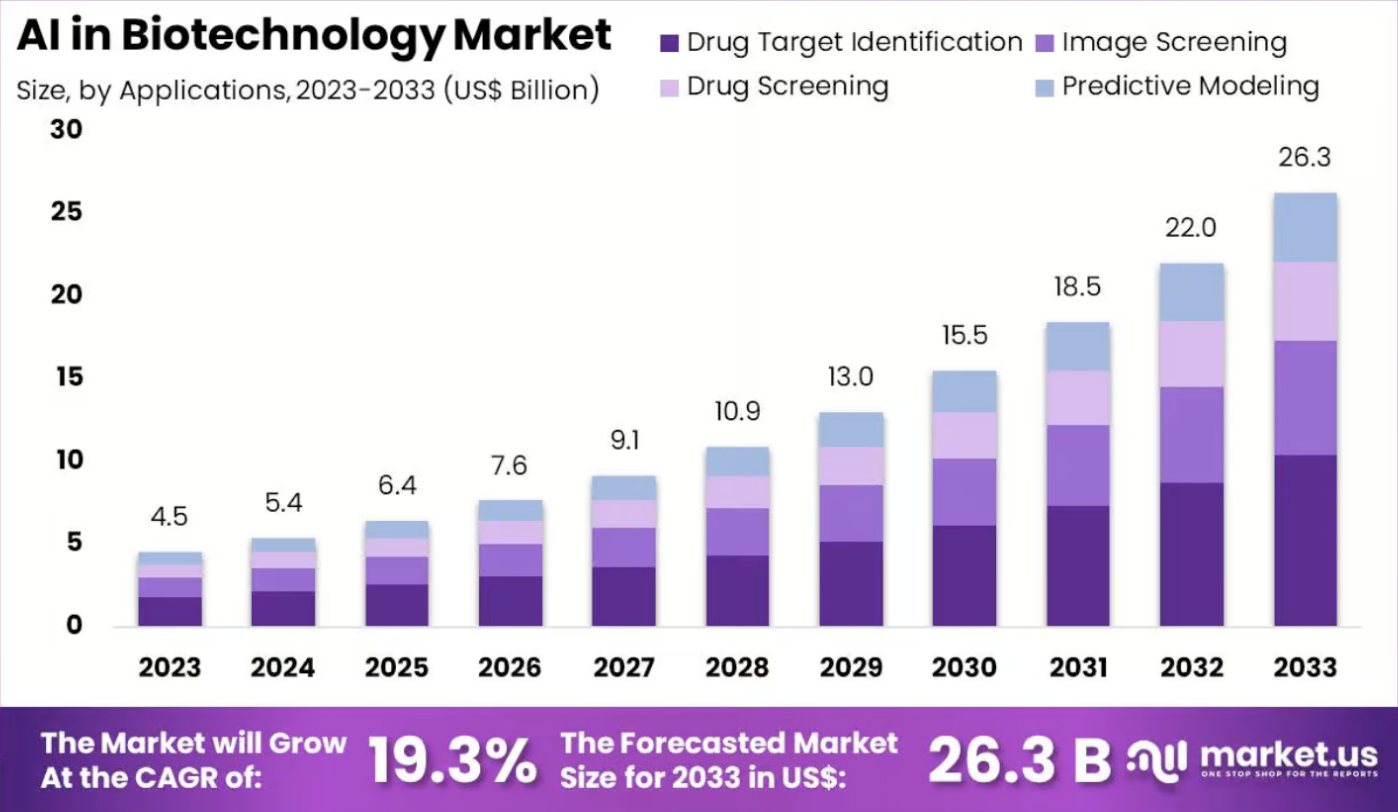Biotech never stops moving forward, but turning a lab breakthrough into a product ready for the market is anything but straightforward. A key piece of that transition, which is often missed, is the evolution of the software behind the science. The flexible, one-off tools used in early experiments, often a collection of ad-hoc scripts, shared drives, and complex spreadsheets, differ sharply from the secure, compliant platforms required when operations scale up.
The goal is to make sure that software built for a small team of five scientists can work reliably for an entire company, follow strict rules, and grow as the market demands. A Deloitte survey from late 2024 showed that 75% of life sciences leaders felt positive about 2025, thanks to new developments in science and technology. To make the most of this positive outlook, the industry needs to get really good at developing scalable software, which is its digital foundation.
 Source: Market.us
Source: Market.us
The Biotechnology Software Scaling Challenge
The core challenge lies in the conflicting requirements of research and production environments. A research prototype prioritizes speed and flexibility to test hypotheses quickly. In contrast, an enterprise-grade solution demands reliability, security, and strict regulatory adherence.
Research vs. Production Requirements
In the lab, software is a tool for discovery. It’s often built to solve a specific problem, with less emphasis on user experience or long-term maintainability. However, when scaling up, the requirements shift dramatically:
Compliance and Validation: Biotech companies running commercial operations must comply with
GMP and other regulatory requirements. This requires their software to go through thorough validation to prove it performs consistently and protects data integrity, following
ALCOA+ principles, making sure all records are Attributable, Legible, Contemporaneous, Original, and Accurate.

Source: Laafon
- Security and Stability: These enterprise systems store confidential patient records and valuable IP, making robust, HIPAA-compliant security essential. They must remain steady and reliable to keep manufacturing continuous and avoid expensive disruptions.
- User Experience (UX): Software that was once exclusively for a small group of expert researchers now needs to be accessible to a far broader set of users. This includes everyone from lab technicians to quality assurance teams, all of whom require interfaces that are intuitive and workflows that are easy to follow.
- Performance: A system designed for small datasets can quickly falter when confronted with the massive data volumes generated by large-scale production, next-generation sequencing (NGS), or high-throughput screening.
Common Scaling Bottlenecks
As biotech startups grow, they often hit predictable walls that stall progress. These bottlenecks typically arise from early technical decisions that didn't account for future scale.
- Technical Debt: The push to release results or secure the next funding round often leads teams to skip steps in software development. The result is “technical debt,” with issues like scant documentation, manual deployments, and no automated testing, which makes the software fragile and tough to update, holding back future progress.
- Regulatory Compliance Gaps: A frequent error many make is seeing regulatory compliance as just a final item to tick off a list, instead of an absolute requirement from the very beginning. Trying to adjust a prototype that doesn't meet standards like FDA 21 CFR Part 11 or HIPAA later on usually ends up being both more expensive and takes more time than simply building it correctly from the start.
- Integration Challenges: Modern labs rely on a complex ecosystem of instruments and software, including Laboratory Information Management Systems (LIMS) and Electronic Lab Notebooks (ELN). Prototypes built in isolation often lack the standardized APIs needed to integrate with these critical systems, creating data silos and inefficient manual workflows.

Source: BioSistemika
What is a Strategic Approach to Biotech Software Scaling?
Transitioning from a prototype to a production system requires a deliberate strategy that embeds scalability and compliance from the beginning. This approach minimizes risks and ensures the final product is fit for its commercial purpose.
Architecture Planning for Scale
A forward-thinking architectural plan is essential. Modern cloud computing offers a powerful foundation for scalability, allowing companies to manage vast biological datasets on a pay-as-you-go basis without massive upfront infrastructure investment. Key architectural principles include:
- Cloud-Native Design: Leveraging platforms like Amazon Web Services (AWS), Google Cloud, and Microsoft Azure provides on-demand access to configurable computing resources, from storage to high-performance computing.
- API-First Development: Building a system around a solid Application Programming Interface (API) means that its various components can talk to each other smoothly. This approach also greatly simplifies the process of integrating it with other laboratory software and third-party applications.
- Microservices Architecture: Breaking down a large, monolithic application into smaller, independent services allows teams to develop, deploy, and scale individual components without affecting the entire system. This improves resilience and speeds up development cycles.
How Can Technical Implementation Strategies Drive Success?
With a solid strategy in place, the focus shifts to execution. The right technical choices can dramatically accelerate the transition to an enterprise-grade solution.
Data Pipeline Transformation
Large-scale biotech has to deal with massive amounts of data. A
ScienceDirect article notes that big data frameworks like Apache Spark and MapReduce tackle this by spreading the analysis across many computers at once. Moving from manual data handling to automated, validated pipelines is crucial. It keeps data accurate and traceable, from the moment it’s collected from lab instruments to the final analysis and report. To see how AI is shaping the field, check out these
7 AI applications in life sciences.
Integration with Laboratory Systems
To automate workflows, seamless integration is essential. A full-scale platform should work with current LIMS for managing samples and ELNs for recording experiments, so all data lives in a single, reliable hub. This setup removes the need for manual input, reduces errors, and lets researchers and operators see the entire process at once. Solid integration will drive the next stage of
drug development.
What Enterprise-Grade Features Should You Prioritize?
As biotech software matures, incorporating advanced features becomes necessary to maintain a competitive edge and maximize efficiency.
Advanced Analytics and AI Integration
Artificial intelligence is no longer a futuristic idea; it is already a working tool reshaping biotechnology. A
StartUs Insights report points out that generative AI is speeding up both drug discovery pipelines and genetic analysis workflows. In 2024, investment in biotech-focused AI climbed to $5.4 billion, a clear sign that the market trusts the technology.

Source: Market.us
When AI and machine learning models are woven into the data processing chain, they reveal layers of insight that raw numbers alone hide. That depth fuels predictive analytics, helping teams
refine processes and pinpoint biomarkers. AI‑powered platforms can now read genomic data automatically, forecast a drug’s performance and compress research‑and‑development cycles from weeks to a few hours. Kanda’s work, which blends AI with real‑world data, shows how these capabilities let clients extract the
full value of their RWD.
The Future of Biotech Software Development
Biotech software does not develop in a vacuum; it moves in step with larger technological shifts. With AI and cloud computing now commonplace, the processes behind R&D and production are becoming increasingly automated and smoother. The
2025 trends outlook highlights that emerging areas like gene editing, synthetic biology and tissue engineering, will require more powerful software solutions for design, simulation and control tasks. Firms that build platforms that can scale, adjust readily and operate intelligently are likely to shape the coming surge of innovation. For readers interested in the newest scientific findings, you can read a collection of up‑to‑date
biotech breakthroughs.
How Can Kanda Help?
Scaling biotech software isn’t easy. It calls for advanced technical know-how and a solid, well-thought-out plan. Teams must integrate older systems, protect data security, and build high-performance platforms that meet every regulatory requirement.
Kanda Software can help you:
- Build Custom Platforms: Develop secure, scalable, and compliant software and APIs tailored to your specific scientific and operational needs.
- Manage Legacy System Integration: Create effective data transformation pipelines to bridge the gap between older lab systems and modern, cloud-based platforms.
- Develop Interoperable Applications: Design and build powerful analytics dashboards, research support tools, and scalable applications that unlock the full value of your data.
- Ensure Security and Compliance: Engineer platforms to meet strict regulatory standards like HIPAA, GMP, and FDA guidelines, protecting your data and your business at every step.
Talk to our experts to explore how Kanda can turn your biotechnology software vision into reality, bridging the space between research prototypes and enterprise systems with secure and reliable custom platforms.
Conclusion
Biotech is shifting from stand-alone lab tools to fully connected enterprise platforms. Research apps are still key for discovery, but many are built on older tech. The next wave is software that’s secure, scalable, and built to work smoothly with other systems.
For organizations, the goal isn’t a complete overhaul in one move. It’s about smart integration and linking legacy practices to the networked capabilities ahead. By adopting modern biotech software development approaches, the industry can harness its data more effectively and speed the delivery of safer, more powerful treatments around the world.

 Source: Market.us
Source: Market.us
 Source: Laafon
Source: Laafon
 Source: BioSistemika
Source: BioSistemika
 Source: Market.us
When AI and machine learning models are woven into the data processing chain, they reveal layers of insight that raw numbers alone hide. That depth fuels predictive analytics, helping teams refine processes and pinpoint biomarkers. AI‑powered platforms can now read genomic data automatically, forecast a drug’s performance and compress research‑and‑development cycles from weeks to a few hours. Kanda’s work, which blends AI with real‑world data, shows how these capabilities let clients extract the full value of their RWD.
Source: Market.us
When AI and machine learning models are woven into the data processing chain, they reveal layers of insight that raw numbers alone hide. That depth fuels predictive analytics, helping teams refine processes and pinpoint biomarkers. AI‑powered platforms can now read genomic data automatically, forecast a drug’s performance and compress research‑and‑development cycles from weeks to a few hours. Kanda’s work, which blends AI with real‑world data, shows how these capabilities let clients extract the full value of their RWD.



